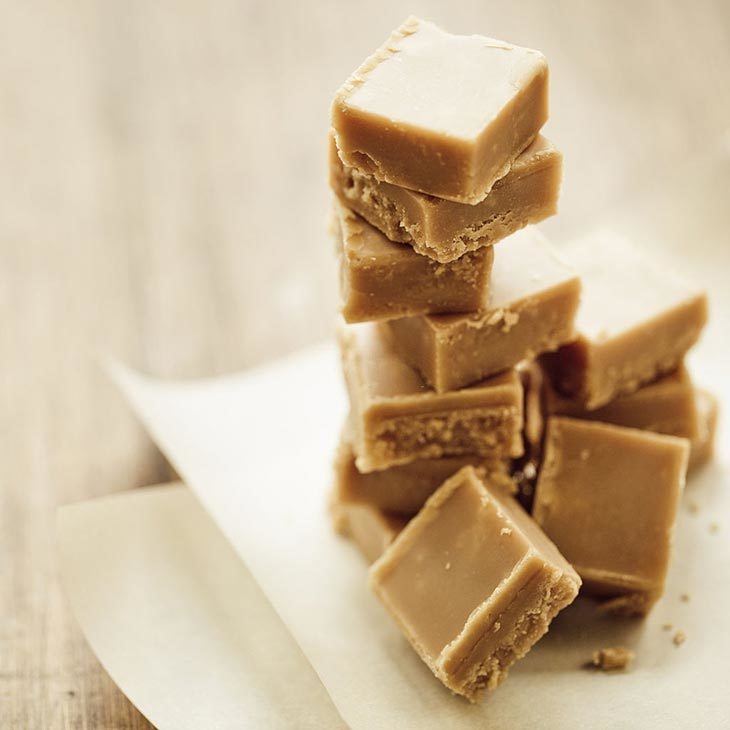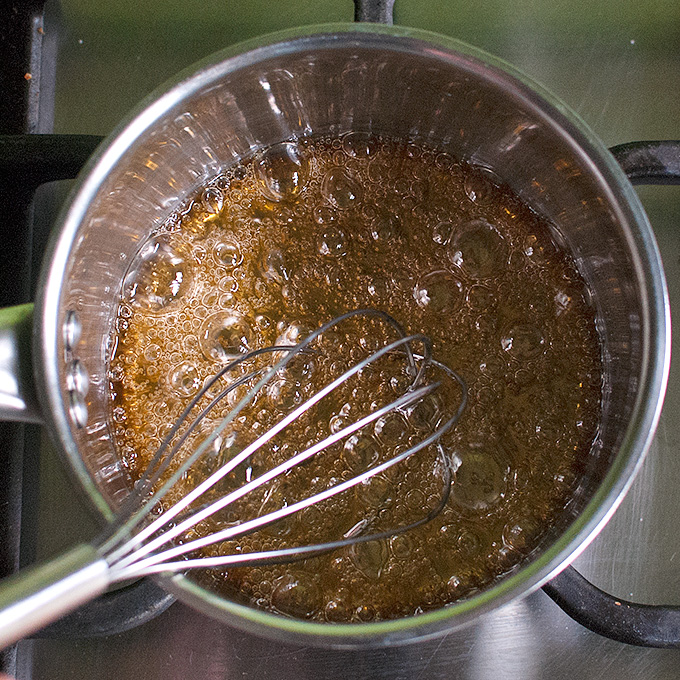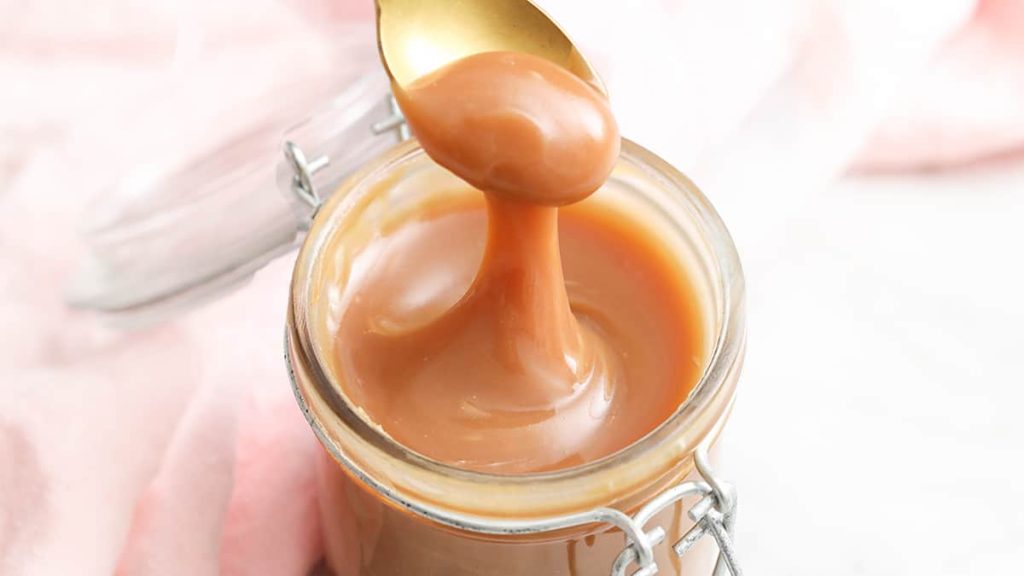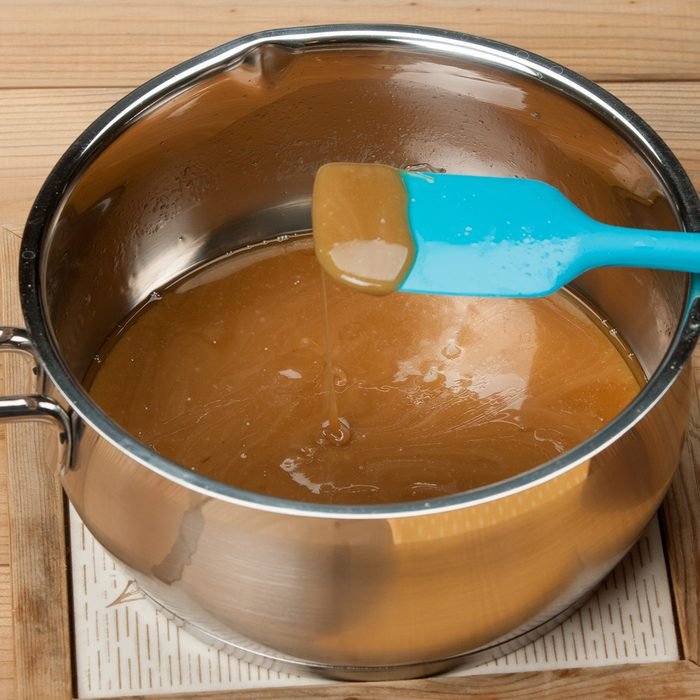How Do You Soften Caramel Sauce That Is Too Hard?

Caramel! Soft, dense, and thick! If you’re a fan of all things creamy and caramel, like me, you should be aware that it’s impossible to stop eating it, as I warned you! You can use caramel as a filling for cakes and cupcakes, poured over waffles and pancakes, and also used to make beautiful smudges on ready-made delicacies. It’s also delicious as a stand-alone dessert.
It’s impossible to resist the rich brown caramel that melts on your lips. But what happens if your golden-brown amber-colored delicacy crystallizes?
Do you know what factors influence the caramel’s texture? First off, it is the amount of moisture it contains that determines the texture. The sugar begins to crystallize as it cools, making it impossible to use for your purposes. It becomes more challenging as it evaporates from the cooking caramel.
Is it necessary to re-prepare your caramel? NO! Add a little more water to remedy this.
How to soften a hard Caramel

So you’ve got some standard room temperature water that you will need to add to the crystalline mass. And now you’re going to bring it to a boil, where you’ll dissolve all of the crystallized sugar. It will take a few minutes to complete this task.
As the temperature rises, the water will begin to dissolve the large crystals, which will finally dissolve into the sugar syrup. Then you can begin the caramelization process all over again.
When preparing caramel, you must always keep two things in mind.
Brush down the side with a small amount of water to see if any crystals have formed. The same effect happens when you use a cover because the steam rises to the top, gathers on the lid, and then washes the crystals that develop down the pan’s edge.
It’s almost as if it’s raining! So keep the lid on until the sugar syrup begins to caramelize, and check it every now and then to ensure it’s still cooking and caramelizing.
The sugar syrup should be thick after a few minutes, and the bubbles should be gently popping, indicating that you’re getting close to your caramel.
It should begin to take on a subtle golden hue. When this happens, begin rotating your pots and whirling them around, which will help the caramel caramelize.
Have about a half cup of heavy cream available because you’ll need it when the mixture turns an excellent dark amber color.
All you require is a small amount of water to dissolve the crystallized sugar. You don’t need to add any more sugar to your syrup because, in this procedure, and in the process of making caramel in general, all of the water evaporates, leaving you with simply sugar at the end.
And, because you’re cooking caramel in a darker pot, you’ll want to go a shade darker than you’re comfortable with. It appears darker than it is; therefore, placing a spoonful of caramel on a white surface will appear lighter.
However, because you’re making it in a stainless pot, it’ll appear to be done before it really is. So, dare to cross over to the other side! Would you mind removing it from the fire and adding cream once you’ve achieved the desired hue?
Make sure to add the cream off the heat so that it doesn’t bubble up and spill all over your saucepan. Combine all of the ingredients in a mixing bowl and set aside to cool slightly before serving.
So, if your caramel crystallizes, there’s an easy way to correct it. Take pleasure in your caramel.
How can I prevent crystallization during cooking?

Heat the sugar in a small saucepan over low heat, constantly stirring, until it is completely dissolved. Bring the syrup to a boil only once the sugar has dissolved, and don’t stir it once it’s done.
For this, you can squeeze some lemon juice or add a little vinegar, preferably apple vinegar. Don’t forget to lubricate the confection with a brush dipped in hot water and brush the crystals from the pan’s sides so that they dissolve in the syrup’s complete bulk.
It must be continuously and effectively combined, without being distracted for even a second, and poured into a silicone mold when the sugar has entirely melted and gone brown but has not yet overheated and burned.
You can play with the amount of cream you use; the less cream you use, the denser your caramel will be.
What is the best way to soften caramel after it has been refrigerated?

The caramel will be relatively dense in the refrigerator, but it will soften after a few hours at room temperature. It can be slightly reheated in the microwave or in a water bath and blended after it has been refrigerated, making it easier to deal with: apply to cakes or mix into the cream. Still, if you don’t overcook it, it will be thinner. Experiment with it.
What is the best way to soften hard caramels?
The requirements of caramels are sometimes in a recipe. You can make it yourself or cut the candy into pieces, then soften hard caramels using a standard household device to acquire what you require.
You’ll need a microwave and the appropriate amount of caramels for cooking. Unwrap your caramels and place them in the dish, then cook for 10 to 15 seconds on high in the microwave. Your caramel will soften after that, and you can do whatever you want with it.
How do I get crystallized caramel out of my dishes and stoves?

Hard caramel elicits apprehension and a desire to discard ruined food. To get new caramel out of the pans, soak them in water for an extended period and then freeze them. In complex cases, we recommend cleaning the utensils with soda, soap, detergent, vinegar, food acids, activated carbon, and boiling with glue.
Taking off plates, pots, and other similar items:
Fill the spoons halfway with hot water, making sure the liquid covers the sweet crust fully. The caramel will entirely dissolve in water in about 2-3 hours, and all you have to do now is wash away the remains under running water. You can improve the impact by boiling the water with soda, mustard, salt, or vinegar.
You should freeze the dishes for 1-2 hours before serving. The caramel will solidify and fracture under the impact of cold, making it easy to remove. Only you have to wash the pan.
Taking the pot off the heat:
- First, pour warm water over it and let it sit for a few hours to dissolve the caramel.
- If that doesn’t work, rub the soot with a towel soaked in soapy water or a washing cloth.
- To clean the stove, combine soda and water and apply to the surface. After 1-2 hours, remove the mask and wash it off.
- You should sprinkle dry soda and vinegar on the burn.
- Our goal is to make the caramel soft in whatever way possible to be taken off the stove.
Taking the microwave oven out of the equation:
- Add the vinegar essence of a lemon to a pitcher filled with water (20 g of acid per 1 liter of water).
- Clean the surfaces by microwaving them for 10-15 minutes.











